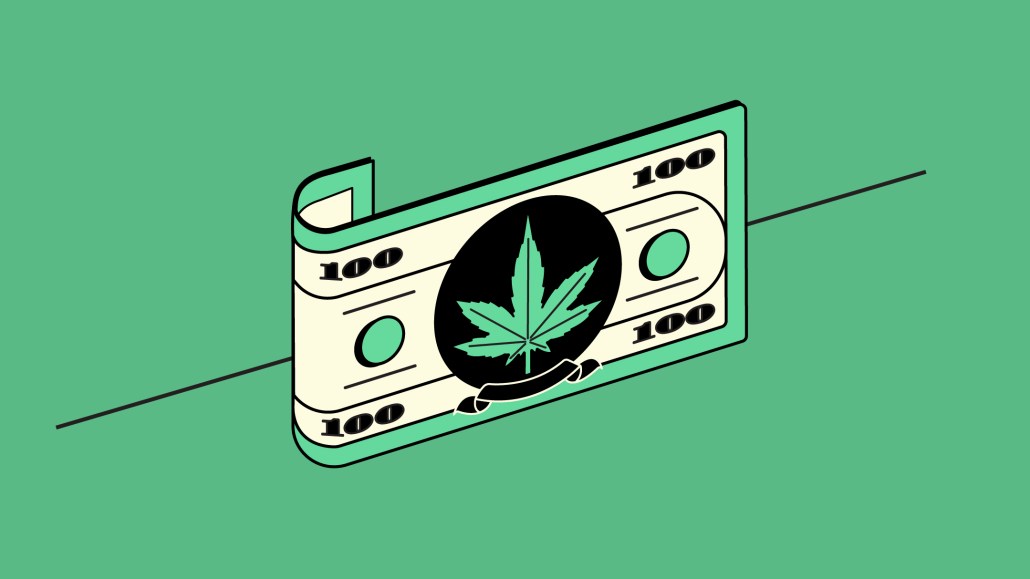As cannabis advertising goes mainstream, guidelines take shape

Consumer-facing, cannabis think tank, the Cannabis Media Council, announced its official guidelines for responsible cannabis advertising early last month, signaling that the industry is taking another step to legitimize the cannabis space.
The announcement comes as cannabis advertisers are building up their ad budgets on the heels of recently relaxed cannabis, hemp and CBD regulations as more states adopt policies, as well as Twitter’s updated cannabis-friendly advertising policy. However, in the U.S., the use, sale and possession of cannabis is still illegal under federal law even as it varies from state-to-state.
Cannabis advertising in North America is expected to hit $2.5 million next year, up from $2 million this year, according to Statista. But there’s still ambiguity around cannabis advertising and marketers say guidelines help set an industry standard for brands.
“It sets the tone,” said Nidhi Lucky Handa, founder and CEO of Leune, a California-based cannabis brand. “In this industry we need, in my view, more of this. We need to have a collective that speaks on behalf of us, for us.”
And that’s the council’s intention since its founding a year ago, per Rachel Boykins, one of the Cannabis Media Council board members, and marketing consultant, who led the draft of guidelines. The guidelines encompass everything from responsible cannabis advertising by following legal mandates, best practices to familiarize newcomers with marketing and advertising basics, potential media partners and publishers, as well as how to compliantly and effectively work with paid influencers. The guidelines advise advertising with scientifically fact-based information related to cannabis, barring ads near places of worship, elementary or secondary schools, and promoting diversity within ads reflective of the cannabis community.
Given these are guidelines, it is unclear if there are repercussions in failing to adhere. And per the Council, brands haven’t and aren’t requiring brands to officially pledge to adhere to the guidelines. However, municipal, state and federal mandates may apply based on those individual regulations.
The guidelines follow a similar structure to other ad categories that have been seen as restrictive or taboo, such as alcohol and pharmaceuticals. It could be likened to responsible practices for beverage alcohol advertising put for by the Distilled Spirits Council of the United States (DISCUS), or the Interactive Advertising Bureau (IAB), which sets industry standards and provides legal support for the online ad industry, per the report.
Ad position: web_incontent_pos1
While many cannabis brands may adhere to their own standards following individual state regulations, it’s important to establish universal rules, said Rosie Mattio, founder and CEO of Mattio Communications Cannabis PR Agency.
“Marketers are trying to market their products with their hands tied behind their backs,” she said. “Having these standards are good so that when we’re going out to market, we’re doing things the responsible way.”
Not only is it a push to set an industry standard, but also empowers startup cannabis advertisers who don’t necessarily hail from marketing backgrounds, according to Boykins. That said, the guidelines are expected to evolve as cannabis marketing gains more mainstream traction, she added.
“Our big hope is that with this document, it’ll seem less of a scary, unknown space for advertising and publishers, and that they’ll be more open to that conversation,” Boykins said.
Traditionally, cannabis has been frowned upon, relegating brands and advertisers to limited ad channels like influencers, cannabis-friendly publications and word-of-mouth. However with eased restrictions varying from state-to-state, updated digital ad policies and a growing ad investment from a media perspective, advertisers say guidelines set a standard and keep bad faith players at bay.
Ad position: web_incontent_pos2
For example, on Thursday, the Federal Trade Commission with the Food and Drug Administration sent cease and desist letters to companies selling edible products that contained Delta-8 THC in packaging that’s nearly identical to food children would eat.
“Our biggest challenge is those [brands] that aren’t complying,” said Kate Lynch, evp of marketing at Curaleaf, a cannabis brand based in New York City. “So if we can get everyone to the same level playing field on how we provide that access and quality and education to the consumer, then we’ve all achieved what we set out to achieve.”
More in Marketing

In the marketing world, anime is following in the footsteps of gaming
As marketers look to take advantage of anime’s entry into the zeitgeist, they might be wise to observe the parallels between the evolution of anime as a marketing channel and the ways brands have learned to better leverage gaming in recent years.

With the introduction of video ads and e-commerce, Roblox looks to attain platform status
Roblox is expanding into more areas than just ads in 2024. Much like platforms such as Amazon and Facebook have transcended their origins to evolve from their origins as online marketplaces and social media channels, Roblox is in the midst of a transformation into a platform for all elements of users’ virtual lives.

PepsiCo wants to remain a ‘driver of culture’ as it turns to influencers and activations amid rebrand
The soda-maker says it can translate cultural relevance into sales volume.
Ad position: web_bfu
